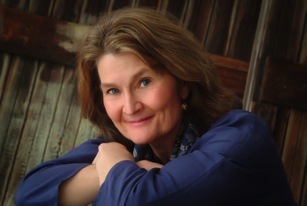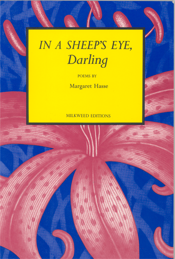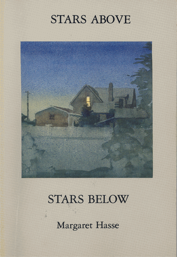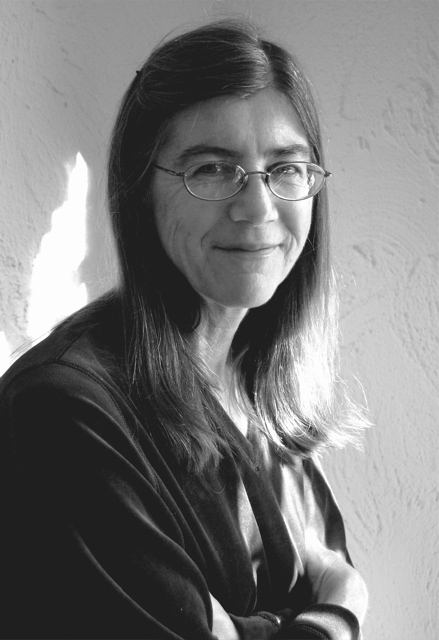LITERATURE: Familiar Pleasures
Poet Connie Wanek reflects on pleasures to be found in the lyrical new collection by Margaret Hasse (a multiple What Light winner!), "Milk and Tides" (Nodin Press, 2008)




IF POETS WRITE (AS I BELIEVE THEY VERY OFTEN DO) to explore and make sense of their own livesand, by extension, all of lifethen Margaret Hasse has managed to put her days and nightsand, by extension, oursinto remarkable order and clarity.
Her new book of poems from Nodin Press, Milk and Tides, is her first since In A Sheeps Eye, Darling (1988), though she has published regularly and been widely anthologized during the intervening years. Milk and Tides has a novels coherence: a prologue, two sections of poetry with a strong narrative element, and an epilogue. The first section, entitled Milk, concerns the adoption and rearing of two sons; the second section, Tides, describes a middle-aged womans reckonings as, after the intense demands of motherhood, she examines where she came from, where she is now, and where, inevitably, she is going.
Generally its wise to avoid too close a conflation of the first person singular, the I (or eye) of the poem, and the poet herself. However, as I read Milk and Tides, I felt I was getting to know Margaret Hasse, and happily so. The poems are friendly, confidential, generous, and amusing; reading the book is like spending an afternoon with a witty acquaintance, a soon-to-be friend, as she shares her best stories with you. Tomato Watch, for instance, is a charming poem made of the adorable (and sometimes stunningly apt) language accidents of a child, and Note Printed to His Father: Sew Woof Bage on Cub Scot Unform echoes that charm. Hasse has a light, sure touch here.
The subject matter in Milk and Tides feels familiar, in at least two senses of that word, but the poems breathe (Emily Dickinsons expression) because of Hasses inventive imagery and the depth of her perception. In the first section, “Milk,” the poem Without begins with a dying hamster nipping the hand that held her, but widens into recollections of a fathers last days. Hasse says:
my father
in the agony of his long death
attacked his family with words.
In the hospital, when we urged
him to sit up, he spat out:
You cant make me happy,
so that wed leave him alone
with the right to his own death
and not the death
we thought he should have.
Powerful lines and a penetrating insight.
But Hasses images can also simply delight the reader. In Forgetfulness in a Hardware Store When Seeking a Sillcock for an Outdoor Water Faucet (a playful nod here to the expositional titles of Li Bai, Du Fu and other ancient Chinese poets), she says she imagine(s)/watering hydrangea with big blue heads/ like a bouquet of elderly women. She uses appealing sensory detail: a hiccups happy cork, a birds riffraff of feathers,” the smoke of roasted pumpkin from Halloween jack-o-lanterns. Not everyone responds to figurative language as I do, of course, but when its apt and original, its richness is surely one of poetrys chief attractions. I believe it is this hallmark characteristic of poetry, which involves close observation and a leap of the imagination, that buffs the windows of the senses back to transparency, as the critic Sven Birkerts put it, employing his own perfect metaphor.
Hasses lines can be very lyrical, especially when describing a physical landscape. Here are lines from A Place Youll Never Leave:
Flocks of birds muster in the sky along one blade of
wind,
fall to pieces over a field
of black calves and their grazing mothers.
The poet is also funny, especially in the first section which describes life with young children; but she’s equally witty later in the collection, as here, in the first stanza of the wonderful Early Rusted Lilacs Send Us North:
Disappointed when the lilacs
rusted so quickly this spring,
we started to see ourselves,
my friend and I, as women
of grey-streaked hair with whom
only the old butcher flirts.
Hasse advises her aging contemporaries to Make yourself last long like a popsicle. As I read the epilogue, the long poem, Life in Reverse, my smile grew broader and broader. Her relaxed diction (here she uses, for instance, the word yucky) brings the poem out of the realm of academia and abstraction.
Poetry appears to be a most intimate artperhaps the most personal. Yet consider Rembrandts self-portraits, or those of Frida Kahlo. Clearly they seem unguarded invitations into the psyche of the artist. The distance between poet and reader collapses in Milk and Tides, too. Hasses young son says, wonderingly, But did you know that we are strangers/ to other people? Hasses warmth and generosity in this new book make his observation appear to be much less true than it is.
About the reviewer: Connie Wanek is the author of two books of poems, Bonfire and Hartley Field, with a third forthcoming next year from Copper Canyon Press. She also co-edited To Sing Along the Way: Minnesota Women Poets from Pre-Territorial Days to the Present. She was a 2006 Witter Bynner Fellow of the Library of Congress.